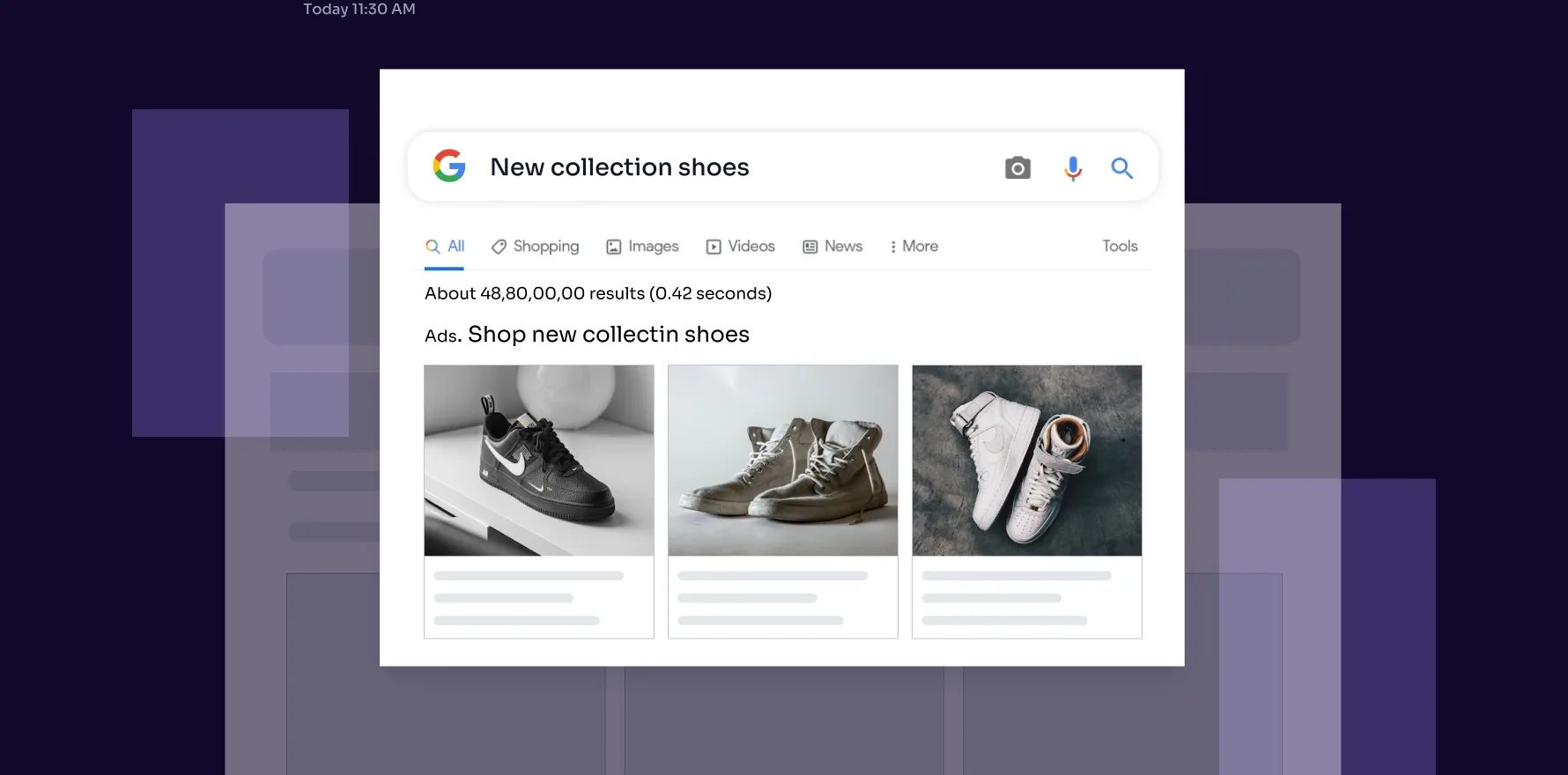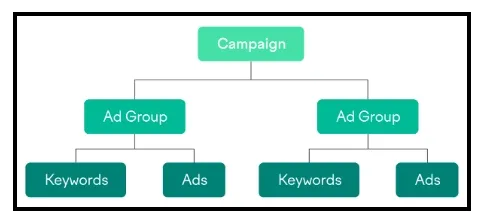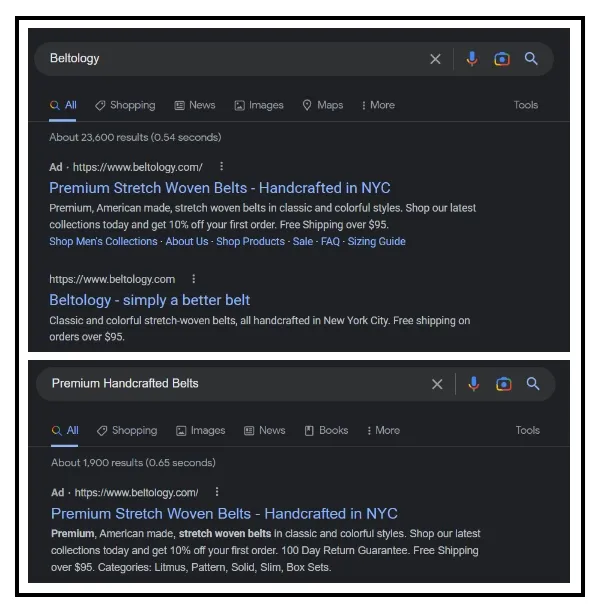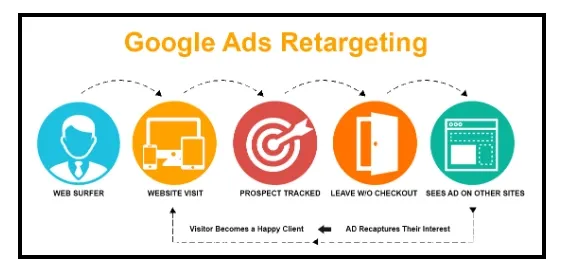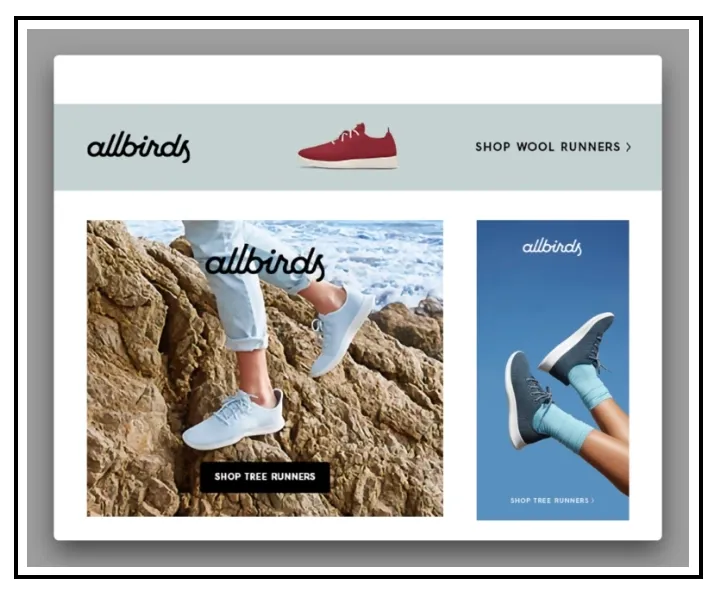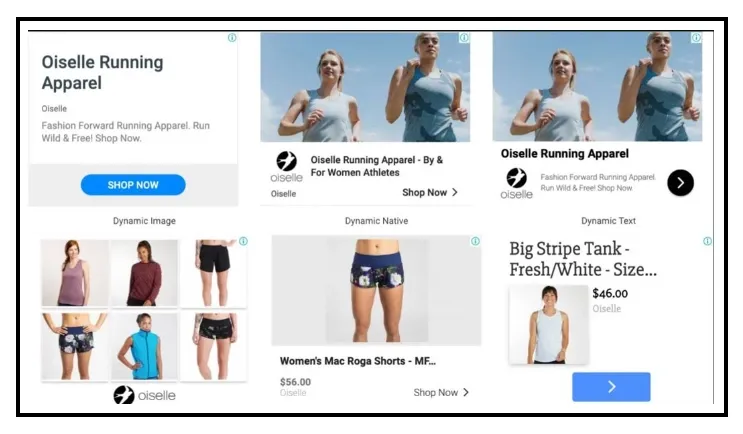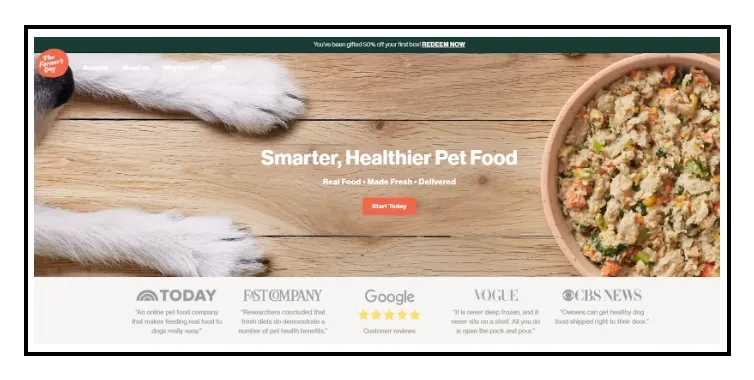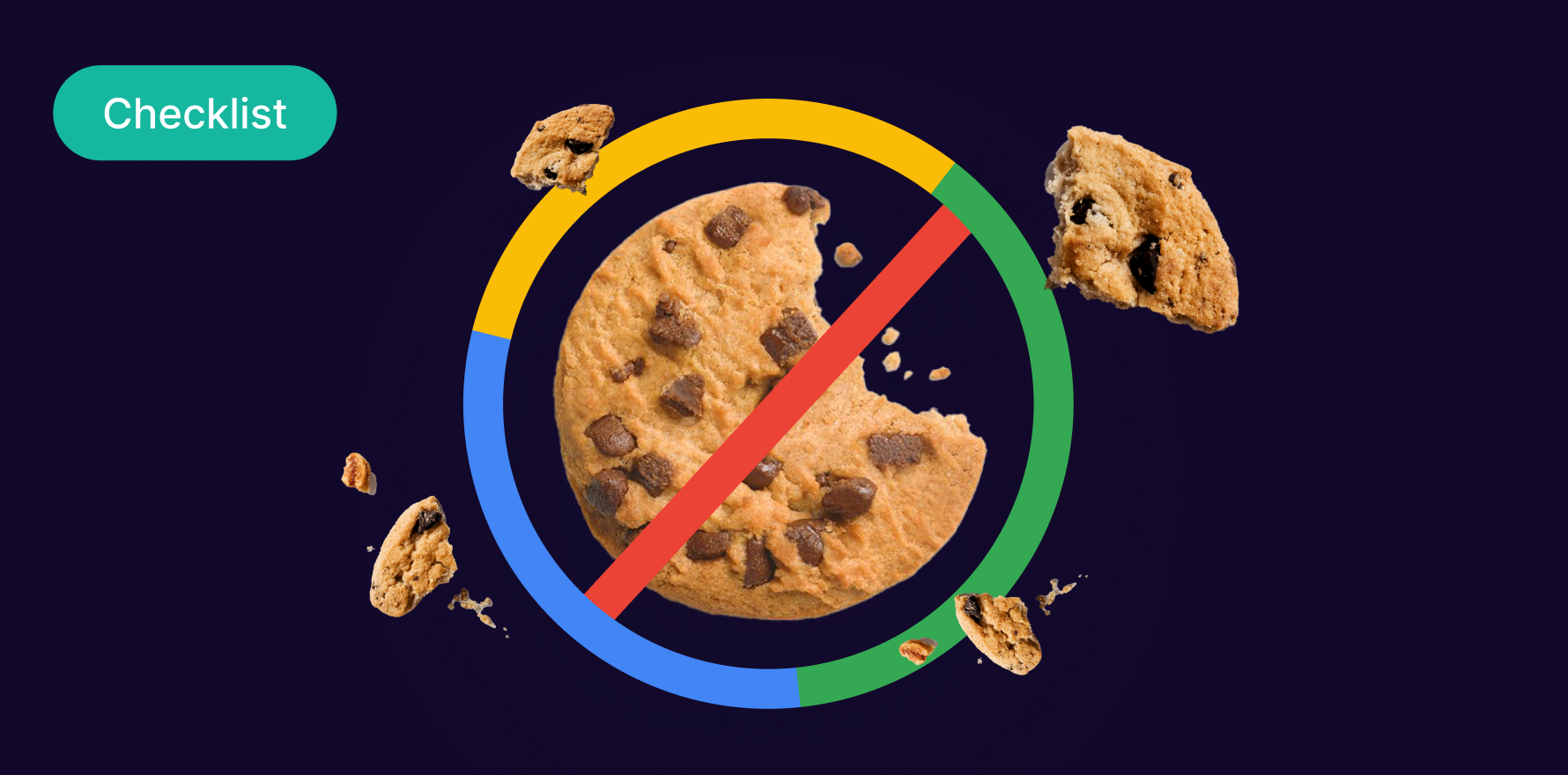Importance of Google search and display ads for Ecommerce and DTC businesses
The Ecommerce market is growing at a tremendous pace and is expected to reach 8.1 trillion dollars in 2026, up from 5.2 trillion dollars in 2021.
However, this market growth has given rise to fierce competition, with brands constantly working towards increasing their customer touchpoints and boosting brand recall through ads.
Accounting for as much as 18% of all Ecommerce revenue, Google PPC ads have become one of the go-to tools for brands to stand out from the competition and showcase products to the right audience at the right time.
With the right techniques and strategies, these ads can not only boost brand awareness but also enable you to drive more sales.
Here are 13 powerful Google Search and Display Ad strategies that will help you target potential customers, increase visibility, and drive traffic to your online store.
8 Best Ecommerce and DTC Google Search Ad Campaign Strategies
With an average click-through rate of 3.17%, Google Search Ads are an effective Ecommerce marketing tool that can be used to promote products to your target audience.
Here are some strategies for leveraging Google Search Ads for your Ecommerce business.
1) Use keyword theming for your search ads
Keyword theming is a process that involves grouping similar keywords together to improve the relevance of ads. The more tightly-themed your keyword groups are, the better your chances are of being seen by searchers, who are more likely to buy what you sell.
Best Practices
- Limit your ad to 7-10 keyword themes, as too many keywords may result in fewer relevant searches.
- Consider keywords your customers might use to search for the products you sell.
- Your keyword themes should be specific to what you are advertising; broader keyword themes result in lower conversion rates.
Mistake to avoid
One common mistake brands make while deciding keyword themes is not considering the customer’s intentions and sales funnel stage. If you do this, you will risk showing ads to users looking for something completely different.
Here’s a search ad example of Dearbeni, an online card store using the keyword theme “card” and making their ad eligible to show when people search for “Birthday cards,” “greeting cards,” and “Valentine’s day cards.”
a-search-ad-example-of-dearbeni
2) Structure your search ad campaigns
A campaign structure describes how your Google Ads campaigns are organized within your account.
Grouping similar ad groups and keywords together can help ensure that your ads reach the right people. Having a well-designed campaign structure also makes it easier to measure results and track progress over time.
The following illustration by SEMrush shows how you can structure your ad campaign.
how-to-structure-ad-campaign
Source
Best Practices
- Consider organizing your campaigns according to product categories, target audiences, or other relevant factors.
- Make sure your ad groups are small and your keywords are tightly themed.
- Make your ad copy relevant and specific to your target audience.
Mistake to avoid
Usually, brands set up only one or a few ad groups for each search ad campaign. Doing this will not let you cater each ad to a specific search, making your ads generic.
For example, if you are a women’s clothing retailer, you probably want to run different ad groups to target women’s tops, women’s pants, and women’s shoes. Using a single ad group to promote all these products will make your ads very broad and ineffective.
3) Analyze search query reports
Search Query Reports(SQR), provided by Google Ads, are reports that show the search queries that people are typing into Google to trigger your Google search ads. You can improve your ad targeting and refine your bids through these reports.
In addition, you will be able to see the average position of your ad and the click-through rate (CTR), which will allow you to determine what kind of clicks and conversions each query generates.
Best Practices
- Use SQR to find new keywords your customers are searching for and optimize your search ads accordingly.
- Keep an eye out for keywords that cause a high bounce rate on your website and minimize their use.
- Continually update the keywords in your PPC Ads.
Mistake to avoid
When analyzing your SQRs, you should understand that just because a search query has a high number of impressions or clicks does not necessarily mean it’s a valuable query for your campaign. Instead, give importance to queries that have better conversion rates.
4) Enhance ad relevance using negative keywords
Negative keywords are an integral part of a successful Ecommerce PPC campaign. Using negative keywords can prevent your ads from appearing to people actively searching for queries unrelated to the products you sell. This allows your business to reach the right audiences while spending campaign budgets efficiently and avoiding wasting money on ineffective clicks.
Best Practices
- Use a limited number of negative keywords, as they make tracking the results difficult.
- Find negative keyword ideas using your Search Query Report.
- Update your negative keywords every week for optimum results.
Mistake to avoid
One of the biggest mistakes brands make is mixing positive and negative keywords. Due to this, your ads will not be shown when your most effective keywords are searched, adversely affecting your ad campaign.
Here’s an example of Office Stock, an Ecommerce office furniture store. This Ecommerce brand uses negative keywords to exclude itself from searches containing terms like “Home furniture” or “Bedroom furniture.”. This helps them target searchers looking for “Workstations,” “Desks,” “Tables,” and “Office Chairs”.
enhance-ad-relevance-using-negative-keywords-by-office-stock
5) Improve ad targeting by making device and location bid adjustments
Bid adjustment refers to adjusting your bids to show your ads more or less frequently, depending on when, where, and how people search.
Using device bid adjustments, you can adjust the frequency of your ads based on the device the searcher is using, such as mobile devices, tablets, smart TVs, and computers. On the other hand, location bid adjustments allow you to adjust the frequency with which your ad appears based on the viewer’s location.
Best Practices
- Utilize Google Analytics device data to bid more aggressively on well-performing devices and less aggressively on poor-performing devices.
- You can use negative location targeting to exclude irrelevant locations from your campaign.
- Monitor your metrics to see how your device and location targeting performs and adjust your bids accordingly.
Mistake to avoid
It’s advisable to avoid making changes to your entire campaign repeatedly. Instead, you can make minor adjustments to your bidding strategies before applying them more broadly using Google’s Draft and Experiments feature.
Here’s an example of Bonobos, a men’s clothing Ecommerce store.
enhance-ad-relevance-using-negative-keywords-by-bonobos
Bonobos offer free shipping and free returns/exchanges only in the US, so they are making sure to target only a US-based audience in this ad.
6) Optimize for branded and non-branded search
You must optimize your search ads for both branded and non-branded searches if you want to reach a wider audience.
A branded keyword includes your brand name or variations of it. Branded keywords allow you to attract people looking for specific information about your business.
On the other hand, non-branded keywords are not associated with a particular brand or company. Customers often use these keywords in the initial stages of the buying process to get general information about a product.
Best Practices
- Although branded and non-branded keywords can work well together, it’s best to use them separately.
- Use negative keywords to ensure your ad doesn’t appear for irrelevant searches.
Mistake to avoid
Many brands make the mistake of bidding low for their brand names, assuming people won’t search for them. However, bidding on your brand name is crucial because it’s the most targeted traffic you’ll ever get since people searching for your brand already know about you and will most likely click and convert.
Here’s an example of Beltology, a DTC brand that sells handcrafted belts. You can see how they have optimized their Google Search Ads for both branded and non-branded searches.
optimize-for-branded-and-non-branded-search
7) Retarget search ads for better reach
Retargeting your search ads is one of the most effective strategies to increase ad performance. In fact, 49% of brands dedicate a budget specifically to retargeting.
Retargeting is an online advertising technique that targets users who have previously searched for specific keywords related to your brand. As a result, businesses can reach customers that are already interested in their products.
Here’s an illustration that shows how ad retargeting works.
retarget-search-ads-for-better-reach
Best Practices
- Target new audiences using ad retargeting instead of wasting your budget on users who have already converted.
- Ensure that the landing page to which you will send your retargeting traffic is optimized.
8) Improve keyword quality score
Using Quality Score, you can determine how well your ads compare to those of your competitors.
The higher your Keyword Quality Score, the more relevant and valuable your ad will be to someone searching for your keyword, increasing the visibility of your ad.
Mistake to avoid
To increase your quality score, you should always focus on ad relevance and quality. Using clickbait and sneaky practices to get clicks will negatively impact your quality score and harm your account in the long run.
5 Best DTC and Ecommerce Google Display Ad campaign strategies
Google’s Display Network boasts a potential internet reach of 90%, making Display Ads a powerful tool for Ecommerce and DTC brands trying to increase brand awareness and reach new customers.
Here are some strategies for leveraging display ads for your Ecommerce business.
1) Optimize your display ads
Optimizing your Google Display Ads to promote your Ecommerce brand is crucial for maximizing your ROI.
Google Display Ad optimization involves improving your advertisements over time based on the data you collect from your audience’s response. By doing so, you can create very effective ads that will help convert more users in the long run.
Best Practices
- Use advanced format options like asset enhancements, auto-generated videos, and native formats to create effective display ads.
- Discover how your Google Ads are performing and how you can improve them with the help of Google Ads Optimization Score.
Mistake to avoid
When optimizing your display ads for Ecommerce, focus more on engagement than conversions. Even though conversions are the end goal of every display ad, creating more engaging display ads will result in better ROI in the long run.
Allbirds, a famous footwear brand, uses DTC display ads to target its cold audience. What’s notable is that their display ads are constantly optimized with a simple and clean design, so the brand name is well visible to their cold audience.
optimize-your-display-ads-by-allbirds
optimize-your-display-ads-from-allbirds
2) Use intent targeting
Intent targeting is a form of marketing that involves targeting users who have already shown an interest in your products.
People search for specific keywords, visit particular pages, and watch videos before they decide to make a purchase. Targeting them with the products they’re looking for will make it easy for you to convert them.
Best Practices
- Track and understand your custom intent audience’s buyer journey to know when and where to target them.
- Monitor audience performance and insights regularly to determine if intent targeting is working.
Mistake to avoid
Your advertising frequency is critical when intent targeting, as high-frequency advertising might change a buyer’s outlook from positive to negative.
Hence, make sure you limit the frequency of your intent-targeted ads.
3) Run responsive display ads (RDA) campaigns
With responsive display ads, you can upload assets (images, headlines, logos, videos, and descriptions), and Google will automatically generate various ad combinations with its machine learning model.
Using responsive Ecommerce display ads reduces overhead for creating ads and managing ad portfolios and enables you to dedicate more time to improving ad performance.
Best Practices
- Ensure the images you use in your Responsive Display Ads clearly show what you’re advertising.
- To maximize conversions, ensure your landing page matches your ad, from the copy to the CTA and even the visuals.
Mistake to avoid
When running RDA campaigns, brands make the mistake of not creating different variations of responsive ad assets.
It’s imperative to experiment with your RDAs constantly and measure what works best with different variations of copy and images.
Here’s a PPC Ads example of Oiselle, a women’s running apparel brand using Responsive Display Ads to showcase their top products.
run-responsive-display-ads-(rda)-campaigns
4) Optimize your landing page
When you run display ads for your DTC brand, your landing pages must be optimized to receive traffic that comes via those ads. Otherwise, all your efforts running those ads and directing them to your landing page will be wasted.
Depending on how your landing page optimization impacts their consideration of your product, they can either leave your site altogether or travel further down the sales funnel to become your customer.
Best Practices
- Test various landing pages to see which ones drive the most conversions and optimize those that perform well.
- Ensure that your landing page provides a seamless user experience, as any inconvenience will drive your visitors away.
Mistake to avoid
A common mistake brands make is not making their landing pages relevant to their PPC ads, as landing on a site unrelated to the Display Ad can drive away potential customers.
Here’s an example of The Farmer’s Dog, a DTC dog food store. The brand grabs the user’s attention with its 50% discount display ad, and the offer continues on the landing page, maintaining a connection between the ad and the landing page.
display-ad-example-of-the-farmer’s-dog
display-ad-maintaining-a-connection-between-the-ad-and-the-landing-page-from-the-farmer’s-dog
5) Customize Ecommerce display ad campaigns using bidding strategies
Once you’ve run your display campaigns for some time, you’ll have enough data to make informed performance judgments to optimize your Ecommerce PPC ad campaign. You can make these changes using various manual and automated bidding strategies that will enable you to customize your campaigns based on your goals.
- Manual Cost-per-click (CPC) and Enhanced CPC allow setting bid adjustments to give you control over how and where your ad appears. These adjustments can be set for various factors, such as the device, time of day, and location.
- Target Cost-per-Action (CPA) is an automated bidding strategy designed to get as many conversions as possible within your budget. This system uses your conversion tracking data to avoid unprofitable clicks and get more conversions while lowering costs.
Conclusion
Search and Display Ad are unquestionably one of the most effective tools that DTC and Ecommerce brands use to attract customers and drive website traffic. However, optimizing these ads for conversions to get the desired ROI is still a challenge for several DTC and Ecommerce businesses.
Following the strategies highlighted in this article will enable you to optimize your Ecommerce Google PPC ad campaigns and DTC display ads helping you increase brand awareness, target potential customers, and drive traffic to your site.
You may also like
Essential resources for your success
